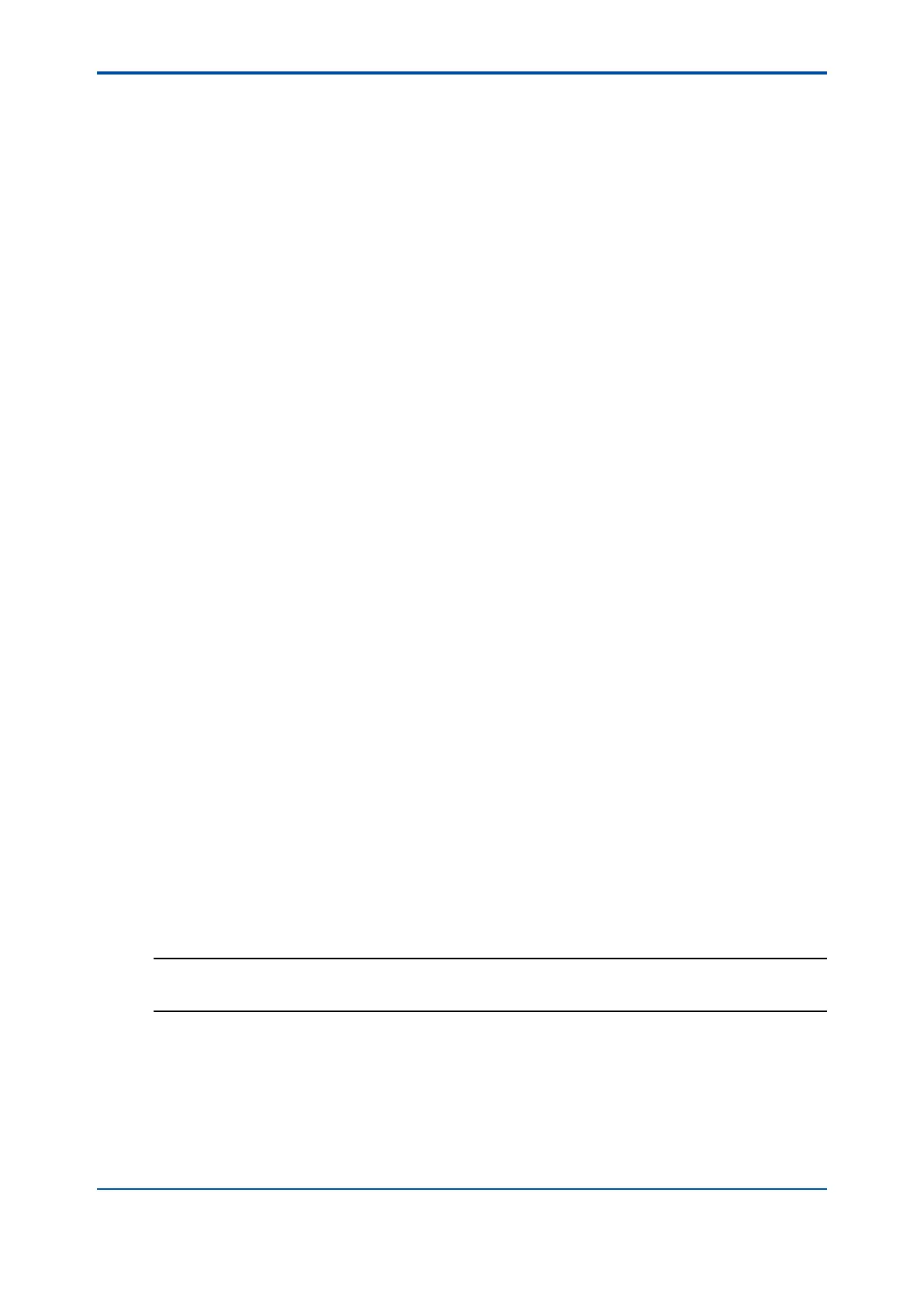<14. CALIBRATION OF DO (Dissolved Oxygen)>
14-2
IM 12A01A02-01E 8th Edition : Oct. 01, 2015-00
14.1 Air calibration
Span calibration in the ambient atmosphere is the most common and easiest method.
Although setting the Zero Calibration to “Enabled” allows 2-point calibration of Zero (0%) and
Span (100%), only span calibration is generally performed. For zero calibration, see the next
section.
Set the sensor in the maintenance mode. Wash off any stain on the membrane and use a soft
tissue to wipe off any remaining water from the membrane.
Leave the sensor in an environment without temperature uctuation or air ow for about 10
minutes, such as in an empty container. After conrming that the reading is stable, calibrate the
sensor.
14.2 Water calibration
Water calibration is a method of calibrating dissolved oxygen analyzers in a laboratory. Accurate
results can be obtained if the span calibration is performed carefully in air-saturated water.
Although setting the Zero Calibration to “Enabled” allows 2-point calibration of Zero (0%) and
Span (100%), the reading must have been stable before performing zero calibration. Therefore,
zero calibration takes a relatively long time.
Conduct water calibration in fresh water. For zero calibration in salt water, perform it by manual
calibration.
Set the sensor in the maintenance mode. Wash off any stain on the membrane and use a soft
tissue to wipe off any remaining water from the membrane.
l Air-saturated water
Pour water (without salt content) into a beaker or other container, and place it on a magnetic
stirrer or other agitator. Put a stirring bar in it and agitate the water, and send air from a pump
(bubbling). It takes 15 to 30 minutes until the water is fully saturated. Then put the sensor in this
water which is still agitated and bubbling, and calibrate it. Keep the sensor at least 3 cm above
the bottom of the beaker to prevent the membrane from directly contacting the air bubbles.
l Water for zero calibration
Zero calibration takes a long time and normally there is no need to perform it. A clean sensor
does not have a zero current and thus does not require zero calibration.
For the zero calibration water, dissolve 20 to 30 grams of sodium sulte in 1 liter of desalinated
water.
NOTE
Dissolve sodium sulte in the water and wait until the reading becomes stable before calibrating
the sensor. Even a healthy sensor needs 40 to 50 minutes. Leave the sensor in the solution.

